
We left the herons building their nest and trying it out for size. (If you missed Part 1 it is here.)
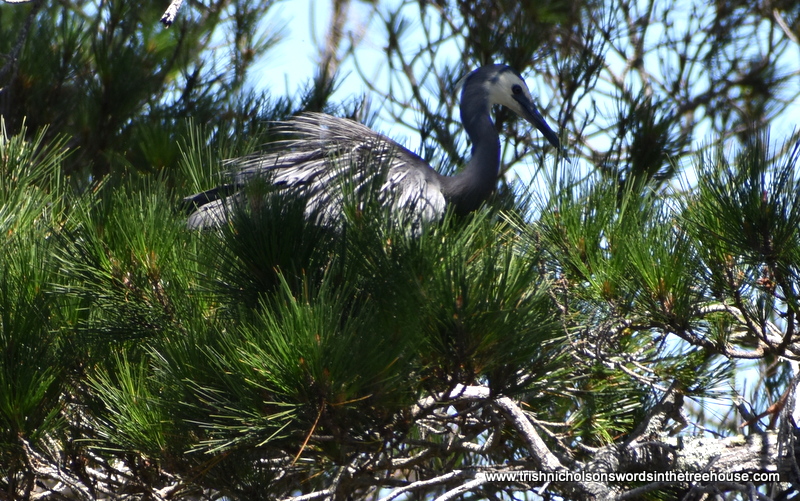
When a gang of noisy magpies charged around the tree-house pine and the neighbouring casuarina tree, squabbling and screeching, the herons tolerated their hooliganism for almost an hour before flying off together. I thought they had abandoned their nest, but they returned that evening and continued as before.
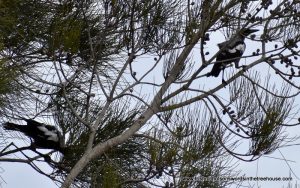
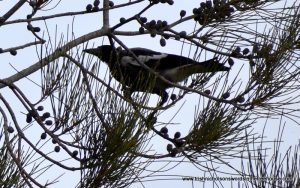
One morning, I saw them both looking intently into the nest. I enlarged the photo I had taken and looked carefully too: there were eggs!

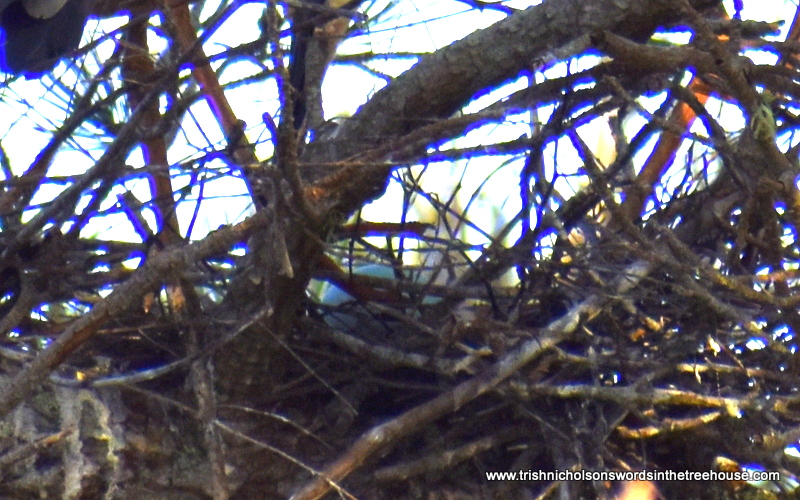
They continued to enlarge the nest until it was quite a large basket rather than a platform.
They were fidgety during the first week; whichever was sitting, changing their position and poking into the nest, rearranging twigs every few minutes. Changing of shifts was frequent. After the changeover, the partner stayed close by, scratching and grooming for half an hour at a time, feeding on insects in the tree bark before finally gliding off to fish in the lake.


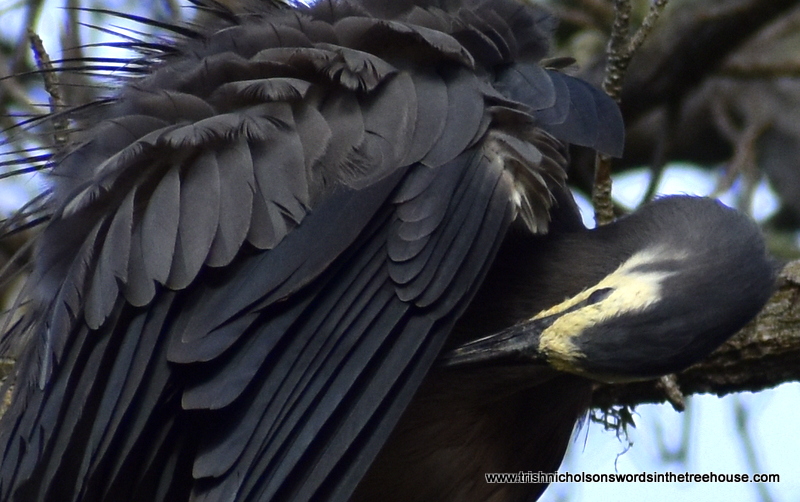

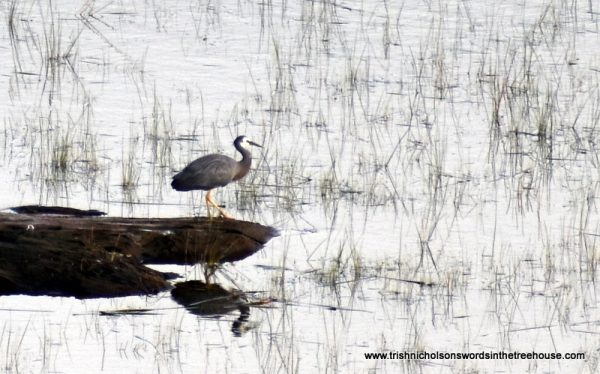
White-faced herons lay 3-5 eggs, but usually, raise only 2 young. The incubation period is approximately 26 days and I marked the likely hatching time on my calendar.
During the second and third weeks, the changeovers were less frequent. The partner was nowhere to be seen for days; the sitter sat unmoving day after day as if in a trance and didn’t seem to eat. I was developing the anxiety of an expectant grandmother.

As the time of hatching approached, magpies appeared again, perching and flouncing around on the same branch that held the nest, and I was concerned that the sitting heron had no partner to defend her or him. But they ignored the intrusion, remaining still and silent, and the magpies eventually left to create mischief elsewhere.
On the day before the eggs were due to hatch, it was a relief to see a shift change take place at lunch time, allowing the sitter to stretch and groom.

Early next morning, I was devastated to see that the nest was dishevelled and empty. It had been raided and abandoned.
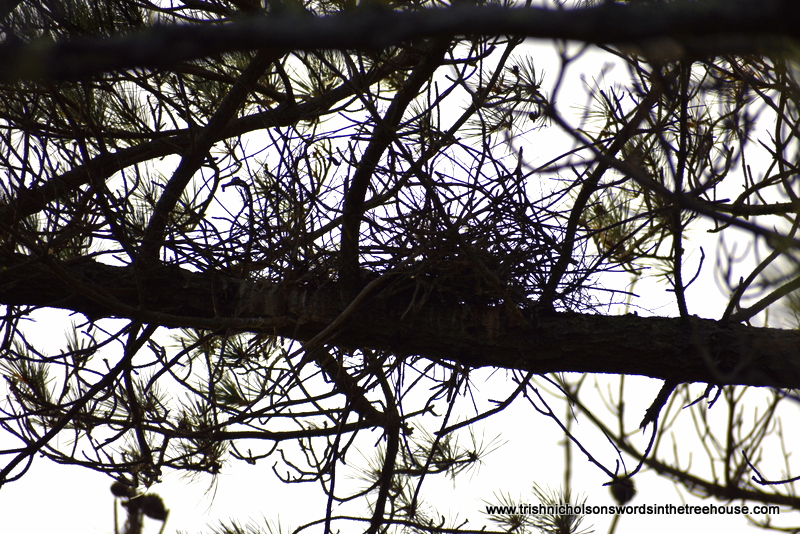
Scrabbling around in the undergrowth beneath the nesting sight I found a broken egg. It’s possible that a possum had carried out the raid, but the egg looked pecked from the outside – the culprits were most likely magpies.


Later in the day, one of the herons returned and attempted to repair the nest.

But after a while they gave up and, looking agitated, waited for their partner.



The pair left the tree-house pine together that day; I have not seen them since. I miss them.
Nature’s default is ‘life’. But life is a chancy business.
******
You will find the full story of the five acre forest, with the deep-time history of the surrounding landscape and its traditional lore, in the nature memoir, The Five Acre Forest.
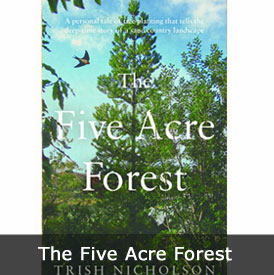 In the UK: available in bookshops, or direct from Troubador
In the UK: available in bookshops, or direct from Troubador
Worldwide: from Book Depository (free delivery), and from all major online book sellers.
The Five Acre Forest is also available in a digital edition for all devices, from all major suppliers, including Amazon
If you would like to see more details and an expanded list of contents, click HERE.
Reviewed in Pilgrim:
“the triumph of The Five Acre Forest, is not just the creation of the site, but how it has helped inspire others and how it can inspire us all to show that each one of us can create our own spaces, learn about the native land and show it the respect it deserves.”
If you have enjoyed this post, Please share with others so that they can enjoy it too. Thank you.

Oh, how very sad.
It is. I know it is simply part of nature, but one can’t help being emotionally engaged. The pair will breed again, and as of this morning, they appear to have returned to the tree to roost.
A touching photo-story. I used to see magpies when I lived in Calgary. One year six baby magpies lived in a nest near the front door of my house. They were trouble! I can appreciate how magpies stole the eggs. Returning to the tree to roost – a sign that the herons are resilient.
Hello Carole, lovely to see you here, thank you for reading and commenting. Their return, though temporary it seems, is a good sign. Perhaps they will return to breed next year. It was later than their usual breeding time.